Terms Every Dog Owner Should Know
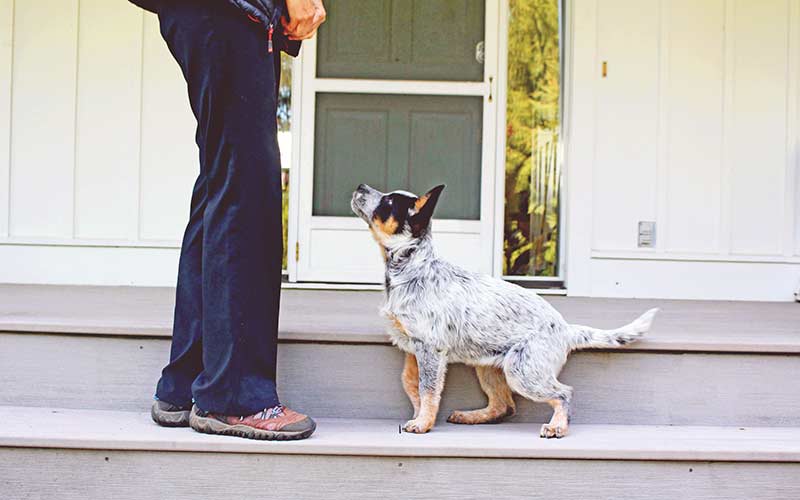
Important Terminology You Should Know When Training Basic Dog Obedience
It is important that new trainers have a working knowledge of some of the terms we use in dog training. That's what this section covers. These are not all of the terms, but they are the most important. These terms come from our Basic Dog Obedience course.
Management
How we live with our dog is what we refer to when we talk about managing our dog or dogs. Good management is fundamentally different than obedience training. We manage our dogs by keeping our dog on leash when we need to control the environment they are allowed in, like in the house or on walk. Good management means we use dog crates or ex-pens when we leave the house or have guests over. Bottom line is good management is just as important (or maybe more important) than good obedience training.
Generalization
A behavior or command is generalized when the dog understands what is expected in every environment and in the face of every distraction. A new dog may learn to sit in the kitchen, but it does not understand what sit means when it's in the garage, when walking down the street, or when friends come over to the house.
Lots and lots of new dog trainers cannot wrap their heads around GENERALIZATION. This leads to mistakenly thinking their dogs are being disobedient when the fact is that the dog is not fully trained to generalize a command. This leads to the dog being corrected for something he doesn't understand.
Correcting dogs when they have no idea why they are being corrected only harms the relationship between the dog and the handler. It can also result in the dog hating training sessions.
Engagement
Engagement simply means our dog is focused on us and wants what we have. What we have is either a high value food reward or its favorite toy. Engagement is one of the most important behaviors anyone can train a dog. Today we spend most of the first 7 or 8 months of our dog's lives just working on engagement with our puppies. Our goal is to teach the dog to engage with a cue and in the face of more and more distractions. Most fledgling dog trainers are not even aware of how often their dogs look at them. They don't understand that when a dog is engaged they have the perfect opportunity to train their dog. Getting engagement and keeping our dogs engaged with us is a huge part of our dog training course.
High Value Food Rewards
New dog trainers may think their dog is not motivated by food rewards. They mistakenly think that they should be training with toy rewards (i.e. a ball). These trainers are wrong. Using toys as a reward is an advanced training method. Dogs need to learn the "rules of play" before rewards are used. Rules of play are discussed in this segment. The fact is dogs that are trained with food rewards can do many many more training reps in a session than a dog that's trained with toys.
So it is important that new trainers learn how to determine what their dog's high value food reward is, to train when their dogs are hungry, and/or how to make their dogs hungry by managing when they eat.
Jackpot Rewards
Jackpotting simply means giving the dogs multiple rewards, one right after the other. Giving multiple rewards is an excellent way of keeping our dogs engaged with us.
Too often we see new dog trainers ask their dog to perform a behavior and then only hand their dog one treat for doing what was asked. Dogs quickly learn they will only get one reward so they tune out (disengage) with the handler after the reward. In essence these handlers are teaching their dogs to stop engagement.
Here is another way to look at jackpotting. You will NEVER HURT YOUR TRAINING by jackpotting a reward.
One of the biggest mistakes new trainers make is they do not reward often enough and they don't jackpot often enough.
Rate of Reinforcement
One of the bigger mistakes new dog trainers make is to only reward their dog "one time" when the dog complies to a command. Within the course you will here me talk about increasing 'your rate of rewards" this simply means that rather than give one reward you offer the dog random amounts - one time you give the dog 4 or 5 rewards then the next time you would reward 2 times then 1 time then 5 times.
People who only reward one time will find their dog starting to "check-out" after receiving their reward. Whereas dogs that get a random number of rewards will stay focused and engaged with their trainer.
Lure & Gestures
A lure or a gesture is simply a physical signal we give a dog to tell the dog we want them to do something. Hand signals are gestures.
When we have our dog follow our hand that has a food reward in it we are luring our dog. We use luring to teach the sit, the down and to get the dog used to having us manipulating the dog into various positions. We demonstrate luring in a number of places in our course (i.e the sit or down training).
Once we use a Lure to teach a behavior we fade the Lure as soon as possible by shortening the lure movement and turning the Lure into a gesture or a signal the dog recognizes.
A gesture is given quickly and is a shortened Lure. We will also demonstrate how this is done in several places in our course.
Reward-based Training / Marker Training
Marker training is a communication system between the dog and handler. It is a reward based training system (similar to but not the same as operant conditioning).
Temple Grandin (author of Animals in Translation. Animals make us human) feels that dogs see the world in a series of pictures, snap shots if you will. They are creatures of the moment, much more so than humans. This is how marker training became popular. We mark/reward a moment in time that the dog does something we like (or dislike) . The dog sees the moment of your mark as a snap shot and recognizes exactly what it just did when the trainer marked the behavior.
You are about to learn that marker training is a very simple concept to understand but it is not easy to do. It takes practice and experience to perfect good timing.
Charge the Mark
The first step in marker training, which can begin with 8 week old puppies or 9 year old rescue dogs, is called charge the mark. Charge the mark training is a process where we teach our dog that every time we say YES, or every time we click our clicker, the dog gets a high value food reward.
If a dog does not go through "charge the mark" training, then when we mark a behavior we like the marker means nothing to our dog.
Charge the mark training can be done in a day or two. We simply take our dog out and say 'YES' and give the dog a high value food reward. The dog doesn't have to do anything or offer any behavior for the trainer to Mark/Reward.
Remember the only purpose for this training is for the dog to place a value on the 'mark'. Once that happens the dog is ready for marker training and the trainer can then start to 'mark' behaviors.
Rules of Play
There are three rules of play:
- The dog must play with enthusiasm
- The dog must release (OUT) the toy when asked
- The dog must bring the toy back after the handler tosses or releases the toy
This course will not cover training dogs with toys. Training with toys is advanced training.
Splitting and Lumping an Exercise
When we get into the meat of actual dog training you will learn there are some behaviors that need to be broken into multiple smaller behaviors and once the dog learns those smaller behaviors we put them all together to form the complicated behavior. People who do this well can be called "Splitters"
A trainer that does not do a good job of splitting a behavior and tries to train an exercise all at one time is called a "Lumper". A lumper is not a good splitter.
Impulse Control - Capping
Impulse control simply means that a dog has learned to control himself in the face of strong distractions. Dogs that are expected to follow directions in a highly distracting environment must have good impulse control
Classical Conditioning
Classical conditions is an involuntary reaction to an external stimulus.
It was first discovered by Ivan Pavlov in Russia when he was running experiments on dogs. He found that dogs in his experiment would start to salivate when a bell went off in the kennel just before the dogs were fed.
He also found the dogs would not salivate if the bell was rung after the food had been put down.
The assumption is that the dog's behavior is shaped by his environment.
Classical conditioning is something that dog trainers will be able to recognize in their dogs during different phases of their training career.
The following video is of our 10 year old German Shepherd office dog (CJ). CJ starts to salivate before he is fed when he sees his steel food bowl.
We normally don't make him wait for his food like you see in this video. We just love old CJ, but he had to take one for the Gipper and show the students in our course what classical condition looks like.
Active vs. Reactive Dogs
An active dog is a dog that is engaged with the handler. It is a dog that is challenging us to teach it something. It wants to learn.
A reactive dog is a dog that waits for something to happen and bases its behavior on the environment it is placed in and what has happened to it in the past when it made the wrong decision.
A reactive dog is a dog that does not want to make a mistake because it is worried about the consequences of making the wrong choice. These are often dogs that have been trained with old school methods in which they have been trained with avoidance training.
A reward based training system produces problem solving active dogs. These are dogs that want to figure out what we want so they can earn a reward.
One of the harder skills new trainers must learn is there will be times when we allow our dog to offer behaviors which may be the wrong decision. We don't correct a dog for trying, we simply don't reward the wrong behavior. Active dogs become problem solvers when allowed to work through problems.
Rank / Pack Structure
Dogs are pack animals, just like wolves or coyotes. Families that have multiple dogs will see that their dogs, if left to themselves, develop a pecking order. Understanding a little about pack drive will make you a better dog trainer.
I wrote an article on my website titled The Groundwork to Establishing Pack Structure with Adult Dogs. I also wrote another version for puppies as well. If you read this article you will learn what I mean when I say "Your dog can love you but not respect you."
Dogs need to know who their pack leaders are, or at least who has a high rank in their pack. I do need to mention that small children cannot be pack leaders or even a higher rank in the pack. The best approach to take when their are small children in a family is to teach the dog that the children are off limits unless you allow them to play with the kids.
Yuck Command
Training our dog to spit out something it has picked up is very important. In fact it is probably the second most valuable command to teach our dog. The command we use to train this is called the 'YUCK COMMAND' or the 'LEAVE-IT'.




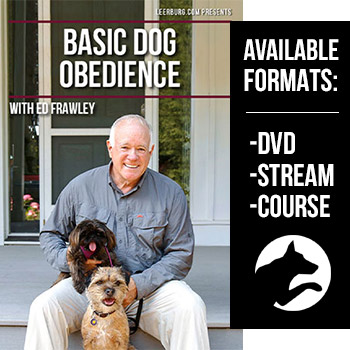
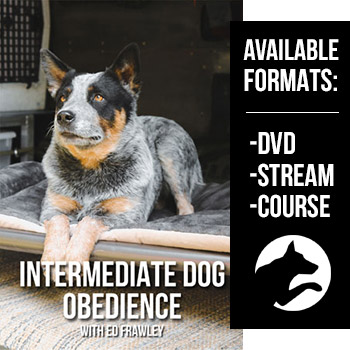
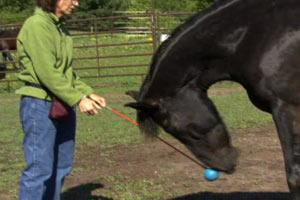
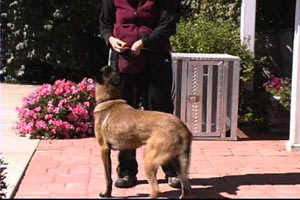

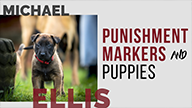
Ask Cindy.